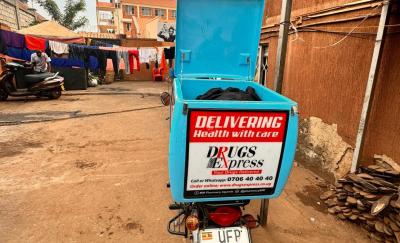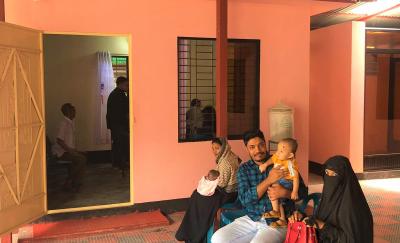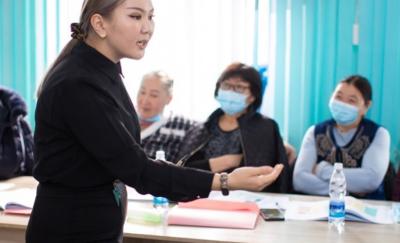Sustainable Systems Strengthening: “There Are No Cookie Cutter Solutions”



Midori de Habich is technical director of the Abt-led Local Health System Sustainability Project (LHSS), USAID’s global flagship activity in health systems strengthening. The position is part of an illustrious career in global health. From 2012-2014, de Habich served as Peru’s Minister of Health and chair of the South American Council of Health. A recognized expert in financial protection and population coverage, she’s participated in several high-level World Health Organization working groups and missions, and was chief of party for four Abt-led, USAID-funded health projects in Peru from 2002-2012. She sat down with us to talk about her vision for LHSS and health systems strengthening around the globe at a time when international development donors are expecting low- and middle-income countries to assume greater financial and technical leadership of their health programs.
You’ve played an important role in several influential health systems strengthening programs. What made you want to dedicate your energies full-time to the Local Health System Sustainability Project (LHSS)?
I’ve worked with Abt for many years, and I know the wonderful work that Abt does all over the world. In fact, I was the Chief of Party in Peru for many years in different Abt-led, USAID-financed health system interventions. When this opportunity arose, I thought it would be really wonderful to see how this work is extended over many countries—hopefully around the world—and see how different social, cultural, and political contexts affect health system strengthening interventions, and what can be learned about meeting the big challenge of universal health coverage, as countries around the globe are aiming to do by 2030.
What’s different about LHSS’s approach?
When you look at the approaches of the last 20, years there’s been an evolution towards “systems thinking,” toward understanding that there aren’t answers and solutions that can be applied everywhere—that context matters. There’s been an evolution in terms of recognizing the importance of political will and the commitment of different stakeholders to making these health systems strengthening efforts sustainable. Certainly, a much greater emphasis has been put on countries’ capacity to rely on their own resources and their own capabilities to bring about those changes, so these are very exciting times.
This is different from what has happened in the past—which was more focused on interventions for specific diseases or specific populations. We’re moving to a wider, more cross-cutting and more challenging approach to the strengthening of the health systems.
I think LHSS is the project that can really put into practice all of these changes in the way we think about health systems. More than bringing in a well-thought-out solution that’s applicable everywhere, it’s providing the countries and the stakeholders with evidence of how other countries have faced the same problems. It’s walking them through their own journeys: co-assessing their needs and co-designing the solutions that are best for them in their particular context and the particular way they want their systems to move forward.
LHSS offers expertise to country governments in a wide range of technical areas. Is there a particular challenge that makes you jump out of bed in the morning, eager to get to work?
I’m excited about the challenge of looking at all these different aspects of health systems strengthening—financing on one side, and delivery and governance and all the associated issues with health resources, information, and pharmaceuticals on the other—and seeing how they’re linked. How do changes in finance impact quality, for example, or how do human resources impact how communities see health facilities?
So, it’s not just looking at one part of the system and thinking that financing will solve all the problems—or that delivery will bring overall change—but looking at the inter-relationships between these building blocks and learning from that. We’ve been doing a lot of work on financing alone for many years, but we understand it’s not just one piece that has to move—a variety of interventions are needed. A “systems thinking” perspective is both an academic approach and a mindset that we’re learning to adopt, and the challenge of bridging those ideas is one that really motivates me.
There’s always a new challenge: a new health systems challenge, or a health disease challenge. New needs the population faces, new expectations as well. It’s always a work in progress. There will always be a new challenge tomorrow when you wake up, [laughs] always something to do better.
Do you think LHSS can help countries facing large influxes of refugees?
As I was saying, there’s always a new challenge tomorrow, and one of the challenges the world faces is the great migration movements that are happening. Suddenly, a large influx of people come in with different health profiles and health needs that need services urgently. While looking at that, it’s clear that the way to address migrants’ health is integrating them into the system, not building separate systems and facilities.
This idea of integration with the same rights as the host community can be quite challenging. First, because there’s a limited amount of resources. Mobilizing new resources is one of the challenges, but it’s also an opportunity for countries to reevaluate their processes and improve their health systems at the same time that they’re facing a new shock of demand on resources.
How does the host community receive the migrants without discrimination, without stigmatization? That’s a huge piece of this work, maybe more than any other kind of intervention. Bringing people together who can be different in terms of their cultures or even their health needs has a communications piece that, when it works, will enable us to learn a lot from the host communities about making this possible.
But it’s going to be impossible to build a model of integration if the host communities don’t see their own systems being improved, and they don’t see benefits from those improvements.
Ultimately, the LHSS project is intended to build in-country capacity to sustain health system improvements without support from USAID. How can countries get to that level of sustainability?
Bringing this health systems perspective, we look at different aspects of the system working together. Not only within the government, of course, but also in the civil society and academic spaces in the country: the universities and the think tanks. Bringing together those different stakeholders and having them think through a specific way forward, a road map, is, I think, the most important aspect of the work: to think together, to co-design, to co-assess the strengths and needs.
It’s the role of LHSS to try to bring evidence into the discussion, but ultimately it will be the stakeholders in each country who will reflect that political will, that commitment of the society to move towards reform. Reform brings change, and change means somebody will need to change their place in the balance of power within the system, so these roads forward are really very country specific.
Looking ahead to 2024, when the LHSS project ends, what kinds of changes will make you feel that the project has been a success?
The project has a very specific results framework. Financial protection, equitable access to services, and the quality of those services—those are our three main objectives. Success for the project is having tangible, measurable impact in those three areas.
So that means increasing financial protection, that is, ensuring a wider number of people don’t face poverty due to an illness—their own or their family’s. More people getting access to quality essential services—if the services do not have quality then there is very little impact on the health of the people. We think that, through our monitoring and evaluation activities, we can measure the impact of the project. In 2024, we will have documented that impact.
Saying that, how does that combine with health systems thinking, that there’s not one way of doing things? I think there’s no contradiction there: There are no cookie cutter solutions. We aim for specific impacts within the results framework that the project has established very clearly from the beginning. So, the “what” is clear from the start in each country. It’s the “how” that varies.
Learn more about the LHSS Project.
Read More About the LHSS Project

Local Digital Innovation Improves Family Planning in Uganda
An LHSS grant helped a Ugandan pharmacy expand an e-Pharmacy platform to include more family planning (FP) products and train staff to provide FP counseling.

Funding Model Helps Bangladesh Expand Primary Health Care
Some municipalities fund primary health care services in urban areas of Bangladesh.

Collaboration Improves Health Insurance Coverage in Nigeria
Abt helped two Nigerian agencies collaborate to increase access to health insurance.

Abt Gives Kyrgyz Health Workers Tools to Fight Vaccine Misinformation
The USAID-funded, Abt-led Local Health System Sustainability Project gave Kyrgyz Republic health workers tools to fight COVID-19 vaccine misinformation.